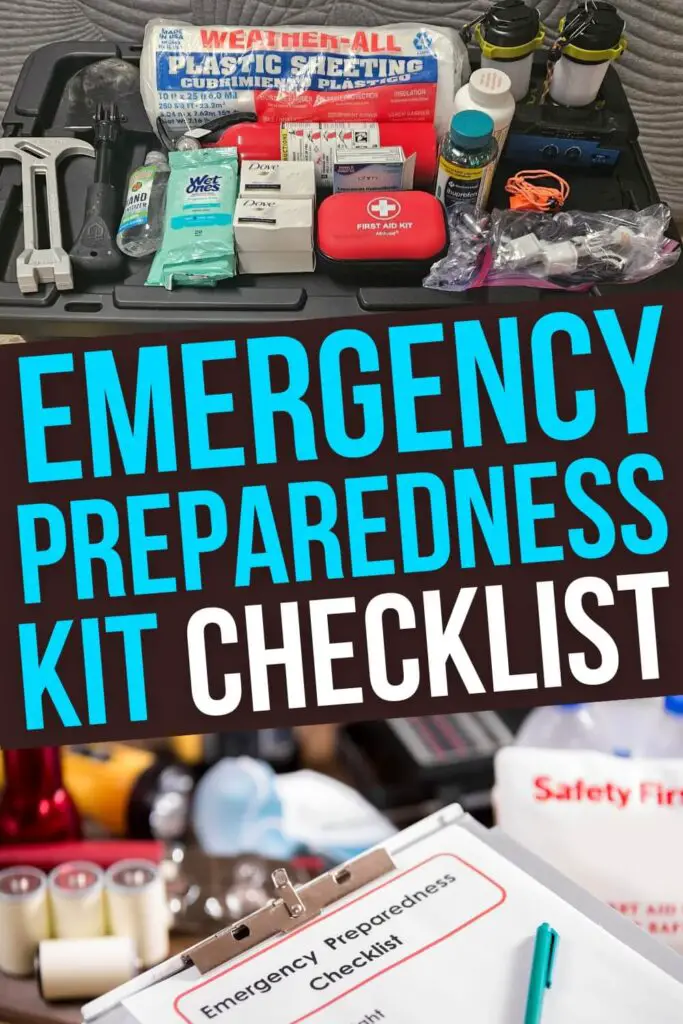Estimated reading time: 4 minutes

Everyone knows that disasters often strike without warning—whether it's a storm, earthquake, power outage, or worse. Just as you should have renter's insurance or homeowner's insurance, you should also have a well-stocked emergency kit. It could mean the difference between comfort and chaos during a crisis.
This checklist is designed to help you prepare for at least 72 hours without things we take for granted such as food, water, and power. If you gather everything in this list, you'll be in good shape for at least 3 days and better off then 95% of your neighbors.
Again, disasters can strike when you least expect, so start working in your emergency preparedness kit today.
1. Water & Hydration
Water is your top priority. You can survive weeks without food—but only days without water.
- Water (3 gallons per person) – Aim for at least 1 gallon per person per day for drinking, cooking, and light hygiene. Use sealed bottled water or proper water storage containers.
- Water purification tablets – If the tap water is unsafe or supply is disrupted, these can make contaminated water safe to drink.
2. Food & Nutrition
Shelf-stable foods will keep you fueled and focused during a crisis.
- Food (3 days per person) – Choose non-perishable items like canned goods, protein bars, and dehydrated meals.
- Manual can opener – Don’t assume electric tools will work!
- Fiber tablets – Emergency food can cause constipation; fiber helps keep your system moving.
3. Eating & Sanitation
Maintaining cleanliness and order is essential when normal services are down.
- Paper cups and plates
- Plastic utensils
- Garbage bags – Useful for waste and also for makeshift rain covers or insulation.
- Cleaning wipes (the skin-safe kind) – For keeping yourself clean without water.
- Disinfectant wipes – Essential for sanitizing surfaces, especially if someone gets sick.
- Hand sanitizer – Keeps hands clean when soap and water aren't available.
- Soap – Bar or liquid; hygiene is even more important during an emergency.
4. Health & First Aid
Injuries and illness are more dangerous during a disaster. Be ready.
- Basic first aid kit – Include bandages, antiseptic, tweezers, gauze, etc.
- Prescription medications – At least a 3-day supply of all vital meds.
- Painkillers – For headaches, injuries, etc.
- Anti-diarrhea medication – Waterborne illnesses can be deadly if not controlled.
- Personal hygiene items – Toothbrush, toothpaste, deodorant, etc.
- Feminine supplies
- Prescription eyeglasses or contact lenses and solution
5. Tools & Safety Gear
These items help you stay safe, secure, and in control of your environment.
- Lighters – For warmth, light, or cooking.
- Fire extinguisher – Especially important during power outages or disasters that may lead to fires.
- Shut-off tool – Know how to turn off your gas, water, or electricity to prevent hazards.
- Plastic sheeting and duct tape – Patch up windows, seal doors, or build a quick shelter.
- N95 face mask – Protects your lungs in dusty, smoky, or contaminated conditions.
- Whistle – Three short blasts is the universal signal for help.
- Weapon for self-defense – Choose what’s legal and comfortable for you (pepper spray, baton, or firearm).
6. Communication & Power
Stay informed and keep your devices running.
- Hand-crank weather radio – Keeps you updated on conditions when the power is out.
- Flashlight – Preferably LED, and keep it handy.
- Extra batteries – For flashlight, radio, and other devices.
- Cell phone chargers – Include both wall and car adapters.
- Power bank – A charged battery bank can save your phone when you need it most.
- Map of local area – If GPS is down, you’ll still be able to navigate.
7. Clothing & Shelter
Be ready for cold nights, wet conditions, or sleeping away from home.
- Change of clothing for everyone – Include socks and underwear.
- Warm blankets or sleeping bags and pillows – Staying warm is survival 101.
8. Comfort & Morale
A sense of normalcy can make all the difference.
- Books, games, puzzles, etc. – Keeping minds occupied reduces stress and fear, especially for kids.
9. Babies & Pets
They’ve got their own needs—don’t forget them!
- Baby supplies – Diapers, formula, wipes, diaper rash cream, etc.
- Pet supplies – Food, water, bowls, medications, leash, and a favorite toy or blanket.
Final Thoughts
Be sure to update your emergency preparedness kit every 6 months by rotating through the food and water, replacing batteries if necessary, and checking all the gear to make sure it's still functioning.
You May Also Like:
The post Emergency Preparedness Kit Checklist appeared first on Homestead Survival Site.
from Homestead Survival Site https://ift.tt/HmpD0aC
No comments:
Post a Comment